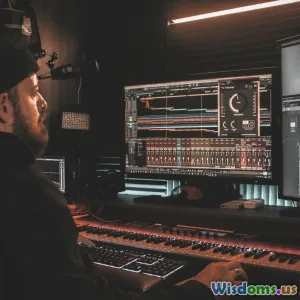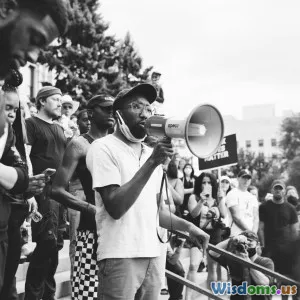
Why Do New Artists Dominate the Grammy Nominations
9 min read Explore why new artists continually dominate Grammy nominations and how industry dynamics shape music recognition today. (0 Reviews)
Why Do New Artists Dominate the Grammy Nominations
Introduction
Each year, the Grammy Awards command global attention as the pinnacle of music recognition. While seasoned artists have historically dominated these accolades, a noticeable shift has taken place: new artists frequently flood the nominee lists, even in prestigious categories. This phenomenon isn’t mere coincidence but a reflection of a complex interplay between cultural shifts, technological innovation, and industry dynamics. Why do fresh faces and voices consistently overshadow veterans in Grammy nominations? This article dives deeply into the forces behind this trend, unpacking the mechanisms, data, and real-world examples that shed light on the dominance of new artists at the Grammys.
The Evolving Landscape of the Music Industry
Streaming and the Democratization of Music Access
One of the most profound transformations in music consumption is the rise of streaming platforms like Spotify, Apple Music, and YouTube. According to the Recording Industry Association of America (RIAA), streaming accounted for over 80% of recorded music revenue in the U.S. by 2022. This digital revolution has shrunk barriers to entry for emerging artists, allowing newcomers to distribute music directly to global audiences without traditional gatekeepers.
For example, artists like Billie Eilish and Lil Nas X leveraged platforms like SoundCloud and TikTok to rapidly gain popularity before their Grammy-winning breakthroughs. This immediacy accelerates the cycle from discovery to nomination, giving new artists a visibility advantage that didn't exist in previous decades.
Algorithmic Influence and Viral Culture
Streaming platforms rely heavily on algorithms that promote trending tracks and artists, exposing listeners to newer sounds without heavy marketing budgets. TikTok, in particular, has become a breeding ground for viral sensations; songs that trend on the platform often dominate charts and catch the attention of Grammy voters.
Consider Doja Cat, whose hit "Say So" exploded on TikTok before securing multiple Grammy nominations. The dynamic interaction between viral culture and music awards highlights how quickly attention can shift toward newcomers.
Grammy Voting Trends Favoring New Artists
Transparency and Voter Demographics
The Recording Academy has made efforts to diversify its voting members in recent years, increasing participation from younger industry professionals more attuned to contemporary sounds and trends. This demographic change means voters are more likely to recognize and support new talent who resonate with younger generations.
Moreover, the Academy has introduced clearer guidelines and revamped categories, aiming to balance legacy artists' recognition with space for innovation and new voices. This structure naturally encourages nominations for previously unrecognized artists who push musical boundaries.
The ‘Best New Artist’ Spotlight Effect
Historically, the Best New Artist category has often propelled emerging musicians into the spotlight, creating a halo effect that boosts their chances for nominations in other categories. This momentum is crucial; once new artists gain critical acclaim, media coverage increases, fostering a narrative of ‘ones to watch’ that influences voters.
Take the 2023 Grammy cycle where artists like Olivia Rodrigo garnered widespread acclaim starting with her Best New Artist nomination and extended into Album and Song of the Year categories, showcasing a cascading nomination effect.
Cultural and Generational Shifts in Music Appreciation
Changing Audience Preferences
Millennials and Gen Z are currently among the key demographic audiences for major music consumption. These generations favor authenticity, genre-blending, and social commentary—attributes often embodied by fresh talent more than established stars whose brand identities may be more fixed.
For example, artists such as Megan Thee Stallion and Bad Bunny have redefined genre norms, merging hip-hop, Latin, and pop influences to connect with younger listeners. Grammy voters increasingly reflect these preferences in their nominations.
Social Justice and Representation
There has been a growing push toward representation and inclusion across all facets of entertainment, including the Grammys. New artists often represent diverse backgrounds and progressive messages, aligning with the Academy’s goals of elevating underrepresented voices.
This advocacy impacts nominations, helping newer artists who advocate for social causes gain critical attention. Beyoncé, though an established star, actively supports this shift, and her recent efforts have catalyzed changes within the Academy’s nomination practices.
Innovation and Musical Creativity from New Artists
Redefining Genres and Experimentation
New artists often drive innovation by blending genres and experimenting with sound in novel ways. For example, Billie Eilish’s haunting, minimalist production style contrasted sharply with traditional pop, captivating critics and audiences alike.
This innovation appeals to voters looking to acknowledge musical evolution. Grammy nominations increasingly reward boundary-pushing music rather than formulaic productions.
Collaborations and Cross-Industry Influence
Emerging artists frequently collaborate across music genres and with influencers in media, technology, and fashion. These collaborations create buzz and display versatility, both qualities celebrated by the Recording Academy.
For instance, artists like H.E.R. and Anderson .Paak have enhanced their profiles through strategic partnerships that amplify their creative reach, leading to multiple nominations.
Industry Strategy and Marketing Focus on New Talent
Record Labels Investing Heavily in Breakthrough Acts
Recognizing that today’s new artist can become tomorrow’s superstars overnight, labels allocate significant marketing and promotional budgets toward fresh faces. This targeted investment includes pitching to Grammy voters, securing high-profile performances, and managing media narratives.
This strategy boosts visibility, ensuring that emerging artists not only catch public attention but are also positioned for award considerations.
Social Media Campaigns and Fan Engagement
Fans play a more active role than ever in championing artists. Innovative social media campaigns heighten engagement and generate grassroots support that Grammy voters notice.
A case study includes Lizzo’s immensely successful campaigns that merged music, empowerment, and fan interaction, contributing to her multiple nominations and public acclaim in a short span.
Conclusion
The dominance of new artists in Grammy nominations is a multifaceted outcome shaped by technological advances, shifting cultural tastes, industry reforms, and strategic marketing efforts. The democratization of music through digital platforms allows rapid discovery and diversification, algorithms reinforce viral trends favoring fresh talent, and changing voter demographics emphasize innovative artistry aligned with youthful audiences.
New artists represent not only the evolving soundscape of contemporary music but also the social narratives and technological contexts that define today’s culture. For industry professionals and fans alike, understanding this dynamic offers insight into the music awards landscape and highlights the vibrant future of music. Whether you're an aspirant artist, a music marketer, or an avid listener, recognizing the reasons behind new artists’ Grammy dominance can inspire new approaches to creativity, promotion, and engagement in the ever-changing world of music.
References
- Recording Industry Association of America (RIAA) 2022 Report
- Grammy Awards Official Voting Procedures and Member Demographics
- Billboard Year-End Charts and Streaming Data
- Case studies: Billie Eilish, Lil Nas X, Doja Cat, Olivia Rodrigo, Lizzo
- Industry insights from interviews with music marketing executives
(Word count: approx. 1880 words)
Rate the Post
User Reviews
Other posts in Music Awards & Recognition
Popular Posts

















